Amazing archaeological finds discovered by amateurs
Digging up the past
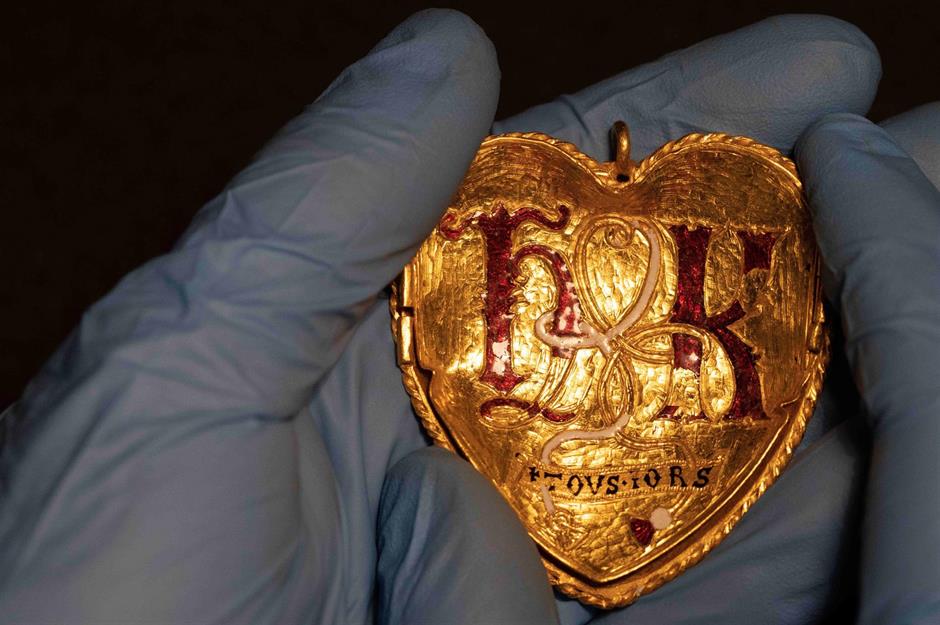
Many of the world’s most significant – and coolest – historic finds weren’t dug up by professional archaeologists. Instead, they were accidentally stumbled upon by builders, renovators, detectorists, history enthusiasts, divers and even dog walkers. Join us as we dig deep into epic treasure troves uncovered by amateurs, and find out how you can see them for yourself.
Click through this gallery to marvel at incredible archaeological discoveries uncovered by ordinary folk...
South Bridge Vaults, Edinburgh, Scotland, UK

When South Bridge was built to cross a steep valley in Edinburgh in the 1780s, entrepreneurial locals quickly utilised its 19 arches for storage and living space. These vaults quickly became cramped, dirty and crime-ridden, and were filled in with rubble and forgotten, until an ex-international Scottish rugby player, Norrie Rowan, uncovered a tunnel from the cellar of his pub in the 1980s.
He dug through the debris and was shocked to find a lost world underneath Edinburgh.
South Bridge Vaults, Edinburgh, Scotland, UK
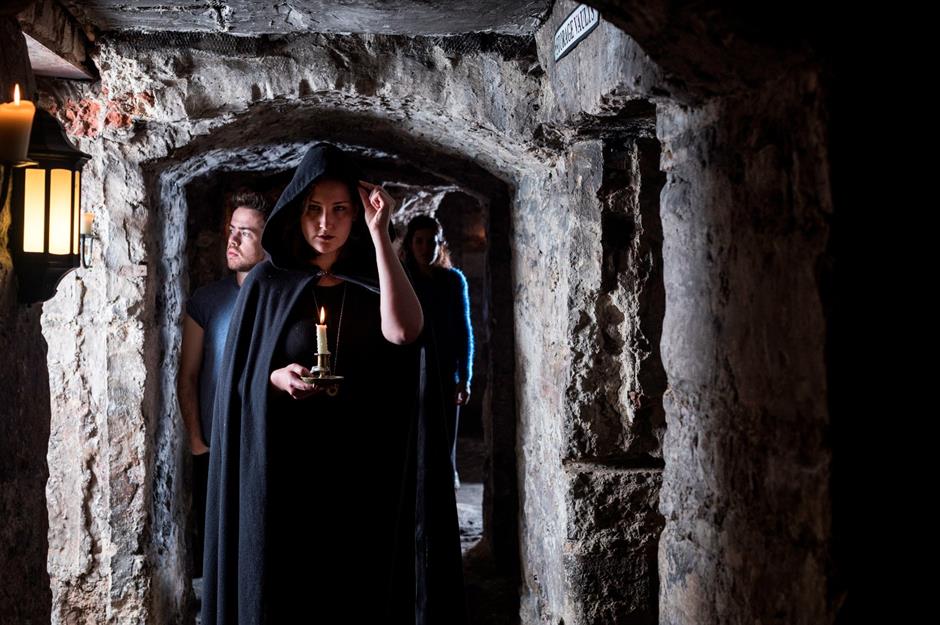
Rowan later used his discovery to hide a Romanian rugby player who wanted to defect from the crumbling USSR. After a match in 1989, Cristian Raducanu was ushered into the vaults to hide from Soviet henchmen while Rowan asked a Scottish policeman for political asylum.
The tunnels came back to life when they were cleared during the 1990s, and some are now used for popular ghost and history tours. One vault is even taken over each year as part of the Edinburgh Fringe Festival.
Uluburun Shipwreck, Bay of Antalya, Turkey
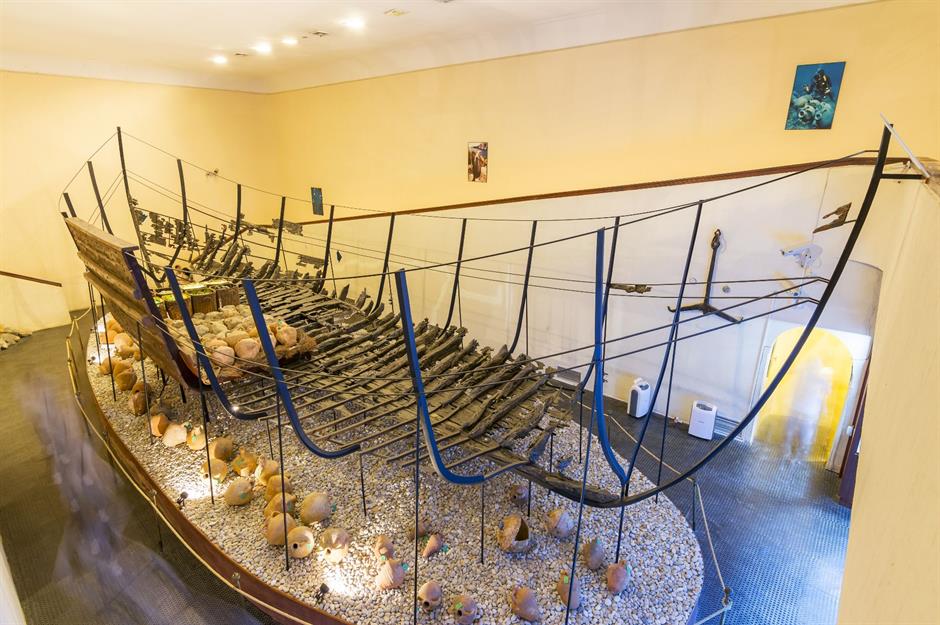
When sponge diver Mehmet Çakir spotted some distinctively-shaped metal slabs (which he described as "metal biscuits with ears") in the Mediterranean off Turkey in 1982, he quickly recognised that they were ancient and reported them to local archaeologists.
Their underwater excavations soon revealed the detritus of a ship that had sunk in the 14th century BC. As a result of thousands of years underwater the cedar hull had all but disappeared.
Uluburun Shipwreck, Bay of Antalya, Turkey
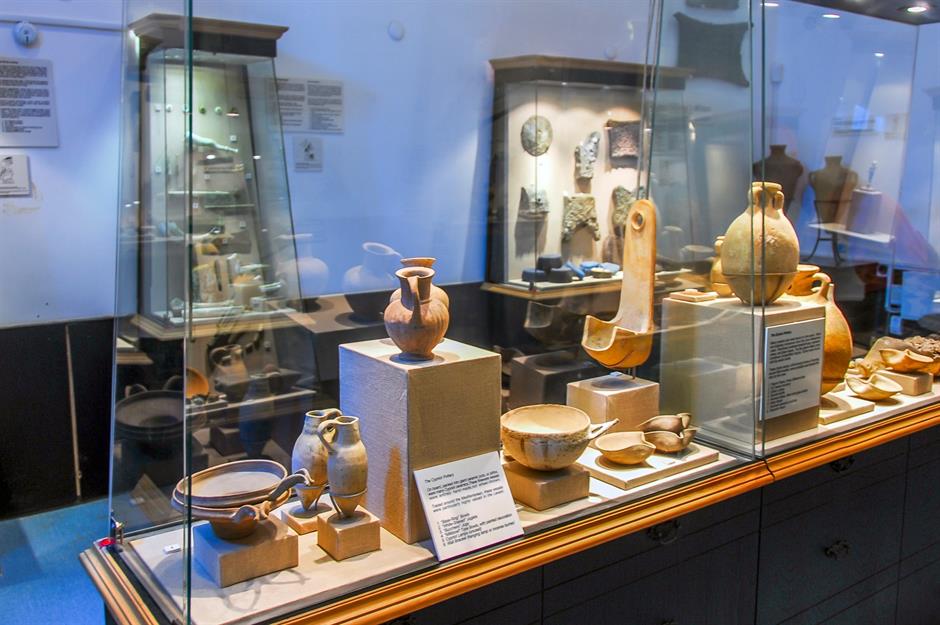
Ten years of study revealed that the boat was a merchant vessel, with her valuable cargo of ceramic jars and bronze ingots still intact. The ship also contained more spectacular finds like elephant tusks, hippopotamus teeth and fine jewellery. The highlight was a gold scarab inscribed with the name of the Egyptian queen Nefertiti. These finds are now on display at the Bodrum Museum of Underwater Archaeology.
Venus de Milo, Milos, Greece

Peasant farmer Yorgos Kentrotas was an early convert to recycling. When he needed stone for a new building in 1820, he decided to remove blocks from an ancient wall on the Greek island of Milos. But while hacking away, he discovered a niche containing a marble statue in two pieces.
What he found would become one of the world's most revered works of art. The female figure is thought to be Greek goddess of love, Aphrodite, and was sculpted by Alexandros of Antioch between 150 and 125 BC.
Venus de Milo, Milos, Greece

Despite having no arms, the statue’s historic value was quickly recognised by Olivier Voutier, a French naval officer and antiquarian enthusiast stationed on the island. He helped dig up the statue and persuaded the French ambassador to buy it. The Venus de Milo was presented to King Louis XVIII as a gift, and he donated it to the Louvre museum the following year. It has remained in the Paris institution ever since.
Grauballe Man, Jutland, Denmark

Tage Busk Sørensen made a grisly discovery when digging for peat in a bog in 1952: a human head. He called for help and a host of intrigued locals came to examine the find, including a doctor.
The body was so well-preserved it was initially thought to be the corpse of a peat cutter who went missing some decades before. However, an archaeologist concluded that the body belonged to an Iron Age man who died around 300 BC.
Grauballe Man, Jutland, Denmark
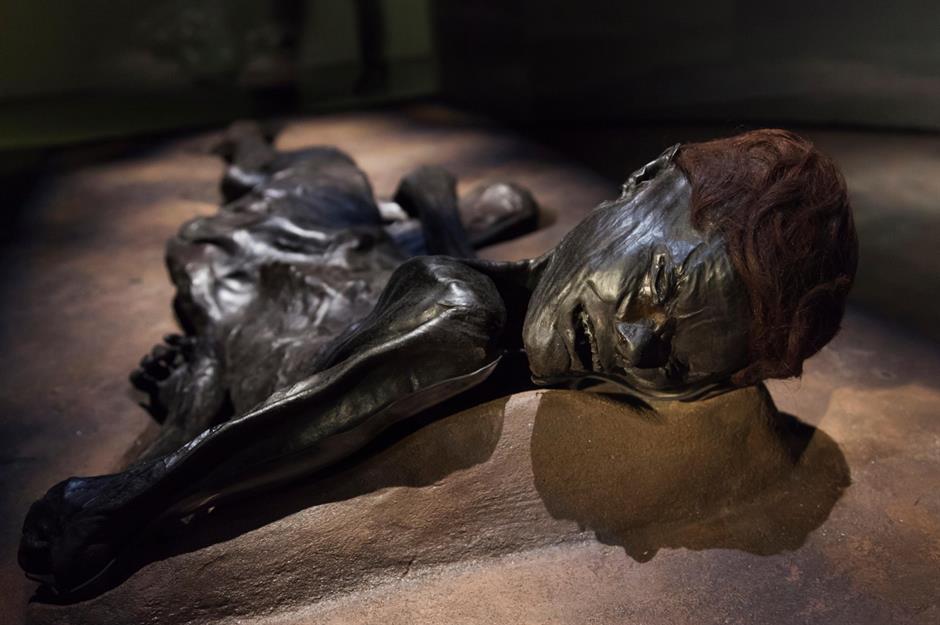
The block of peat encasing the body was dug up and removed for careful investigation. Archaeologists discovered the man was in relatively good health when he died, but the neck was cut so deeply that it nearly severed the head – a wound that could not have been self-inflicted.
Why he died – whether it was murder or ritual sacrifice – remains a mystery. The Grauballe Man is now on permanent display at the Moesgaard Museum near Aarhus.
Lascaux Cave, Montignac, France
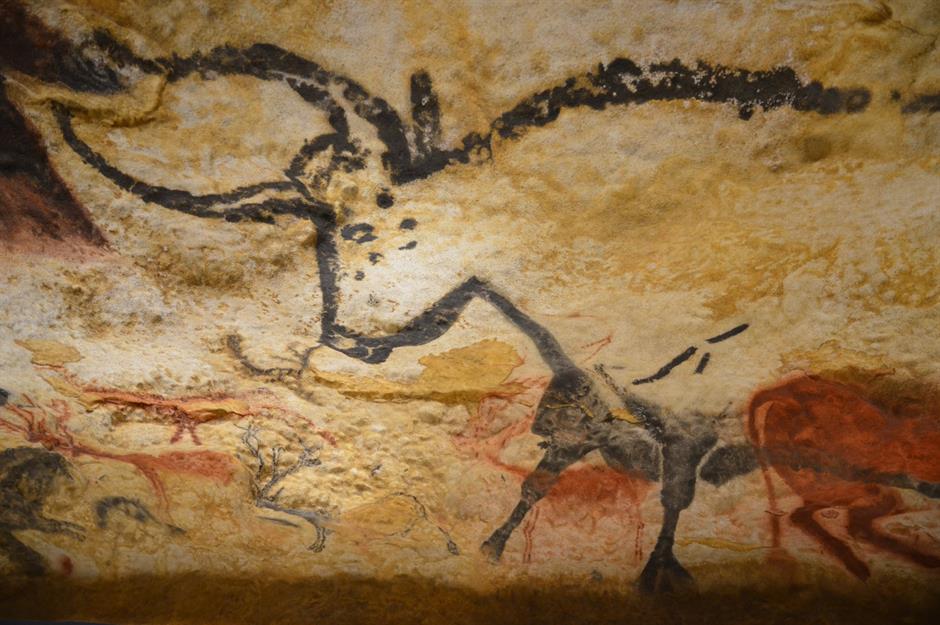
The discoverer of Lascaux Cave may not have been human at all – according to some sources, it was a dog, who started sniffing around a hole in the ground in September 1940. The canine explorer’s 18-year-old owner Marcel Ravidat and three friends excitedly jumped in, thinking they’d found a secret passage to a nearby manor house.
They actually found an underground cavern decorated with more than 600 paintings and engravings created by prehistoric humans around 20,000 years ago.
Lascaux Cave, Montignac, France

A local schoolteacher brought in experts to vouch for the authenticity of the prehistoric artwork. Lascaux Cave was opened to the public in 1948, but air quality inside the cavern quickly declined and began to threaten the paintings. The cave was closed in 1963, and access is now heavily restricted; however, an exact facsimile is now on display at a nearby visitor centre.
The amateur activity doesn't stop there – using the facsimile, an amateur archaeologist was recently able to speculate that Lascaux and other European cave paintings are the earliest existing forms of lunar calendar, tracking the reproductive cycles of animals.
Dead Sea Scrolls, Qumran Caves, West Bank

A frustrated Bedouin shepherd was searching for a lost sheep in 1947 when he threw a rock into a cave. The sound of shattering pots tempted him inside, where he found jars containing papyrus scrolls dating from the 3rd century BC to the 1st century AD.
Feeling pleased with his discovery, he sold them to an antiques dealer in Bethlehem for seven Jordanian pounds (about $340 in today's money). A few years later, they would sell for $250,000.
Dead Sea Scrolls, Qumran Caves, West Bank
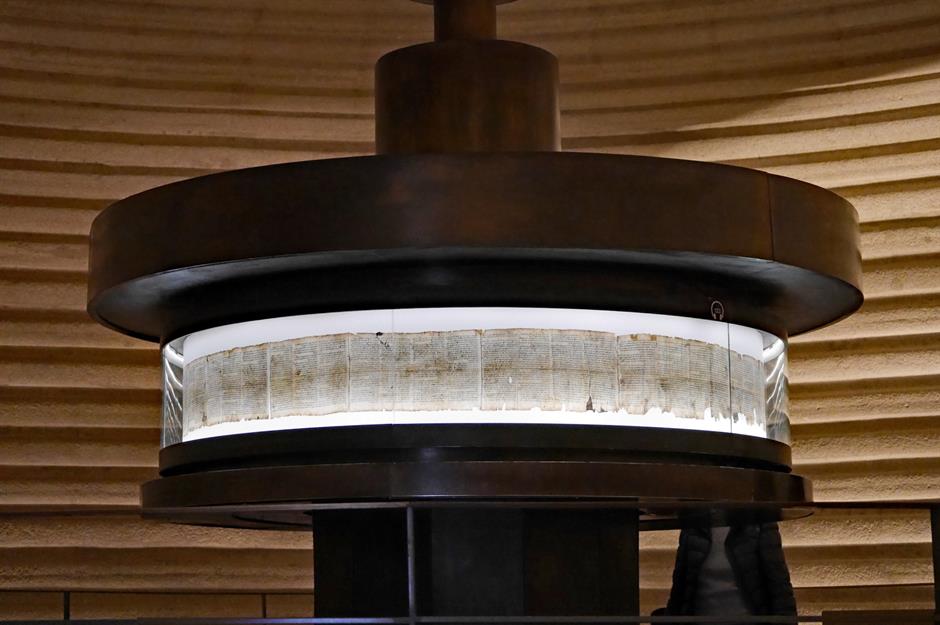
Subsequent excavations in the Qumran Caves found almost 1,000 different scrolls written by a breakaway Jewish sect called the Essenes, who held mystic beliefs. Some of the scrolls are the earliest surviving copies of Biblical texts. Together, they shine a spotlight on the development of Judaism and the origins of Christianity.
As the area around the Qumran Caves is in the West Bank, a centre of the Israeli–Palestinian conflict, the scrolls are now split between the Israel Museum in Jerusalem and the Jordan Museum in Amman.
Serdica Amphitheatre, Sofia, Bulgaria
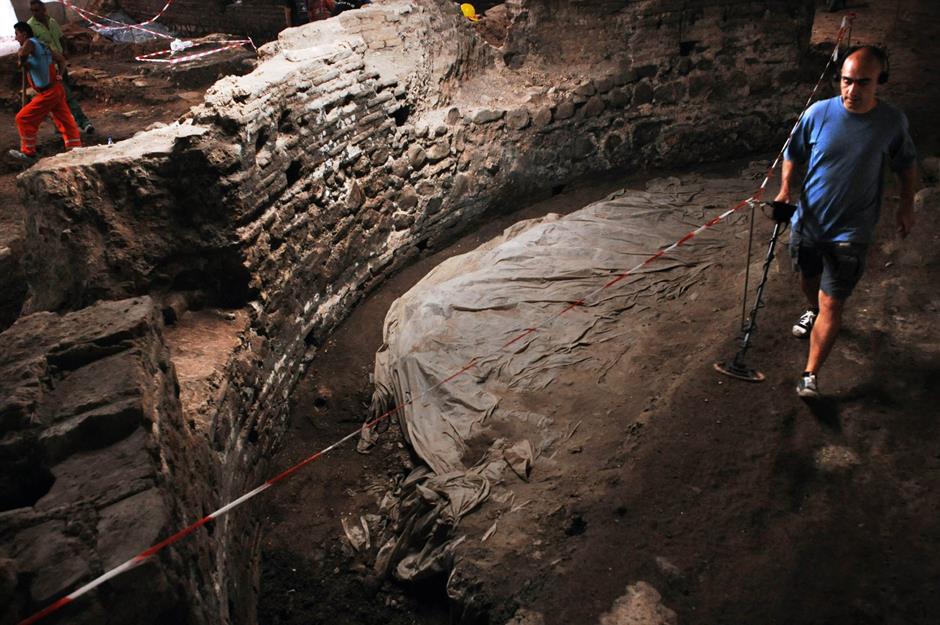
Faced with growing tourist numbers flocking to the Bulgarian capital, engineers began to dig the foundations for a new luxury hotel in 2004. But their work came to a halt when they uncovered thick walls buried beneath the ground.
Archaeologists declared they had finally found the lost amphitheatre of the Roman town of Serdica, a building constructed to entertain the Roman residents in the 3rd and 4th centuries AD, the exact location of which had been lost to the mists of time.
Serdica Amphitheatre, Sofia, Bulgaria

In its heyday, the amphitheatre saw gladiators and animals battle in violent bloodsports, and it may even have been visited by emperors. It was capable of holding up to 25,000 spectators. Modern building work continued after the archaeologists had finished excavating the remains, but the hotel was redesigned to ensure that as little of the Roman ruins were damaged as possible.
Now, hotel guests (and curious passers-by) can see the remnants of the amphitheatre on the ground floor.
Sutton Hoo, Suffolk, England, UK
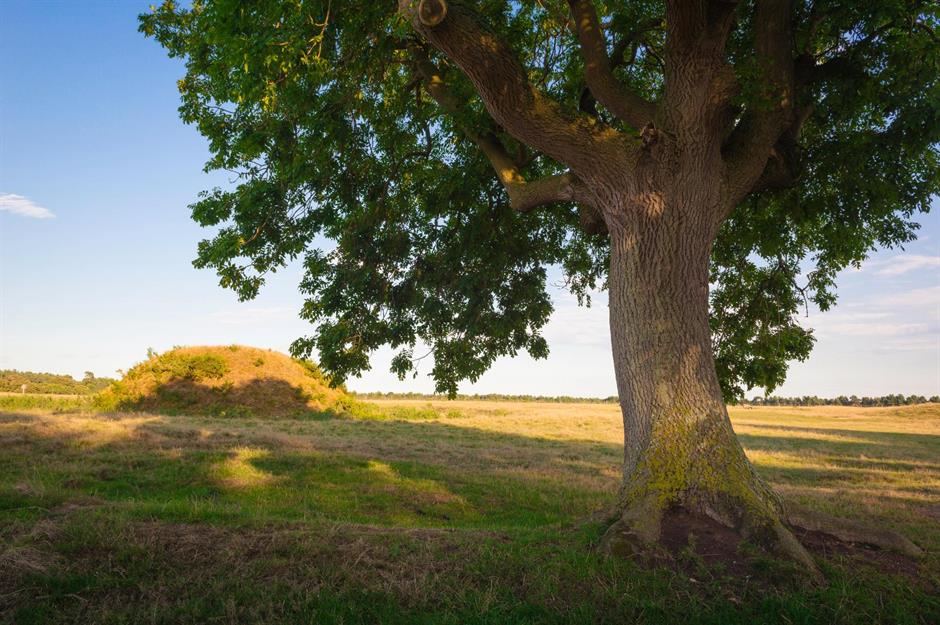
After the death of her husband, Edith Pretty busied herself with investigating strange mounds in the land attached to her large house. She obtained the services of self-taught archaeologist Basil Brown and an excavation began in 1938.
When they opened up the largest mound and deftly brushed away the soil, they could not believe their eyes – they had uncovered a burial chamber within a gigantic ship. Valuable 7th-century Anglo-Saxon objects were scattered all around.
Sutton Hoo, Suffolk, England, UK
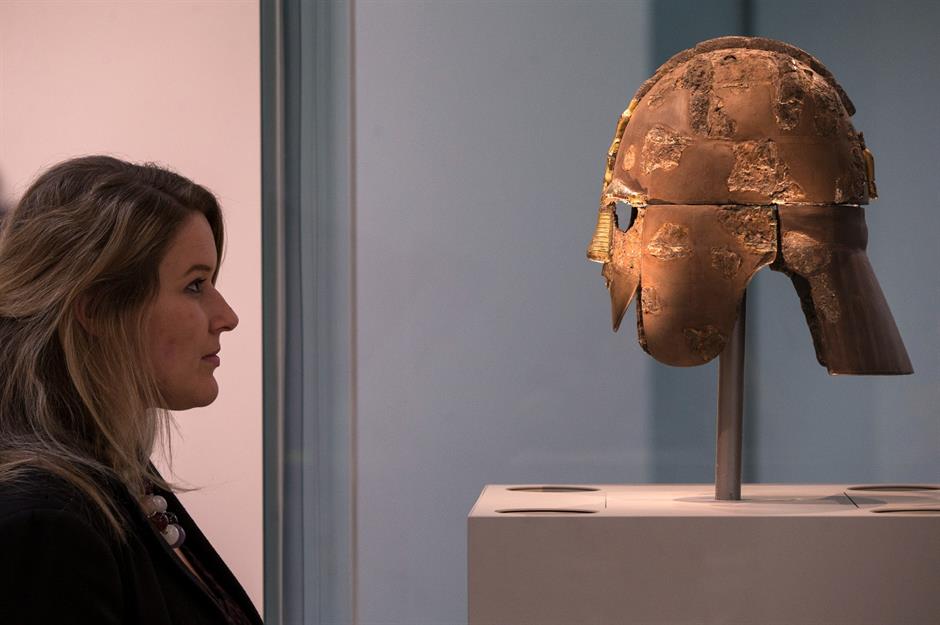
Professional archaeologists stepped in as soon as it became clear that the site was of national importance. Many now believe it to be the royal burial site of King Raedwald of East Anglia. Edith Pretty presented the king's treasure to the nation (it is now on display at the British Museum), and the excavation site is now a visitor centre that tells the story of the diggers and their stunning finds.
Derinkuyu Underground City, Cappadocia, Turkey
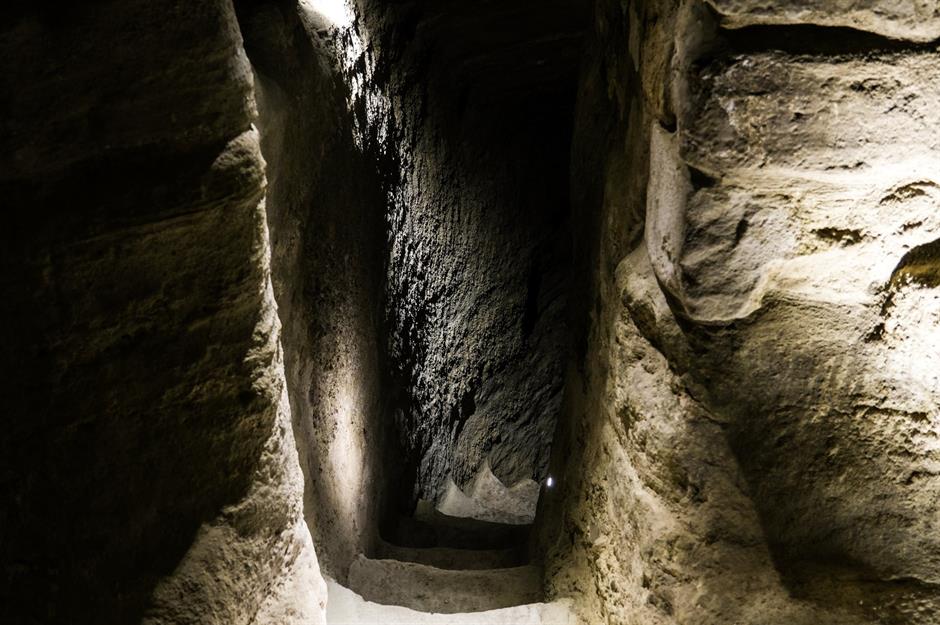
A Turkish man had an unusually frustrating problem when he was renovating his house in 1963. Allegedly, his chickens kept disappearing through a hole in a wall, never to return. Eventually the man knocked the wall down and discovered a tunnel leading underground.
The further he walked, the deeper it went, reaching 280 feet (85m) below the surface. He had discovered the entrance to a vast underground city carved into the soft volcanic rock over 3,000 years before.
Derinkuyu Underground City, Cappadocia, Turkey
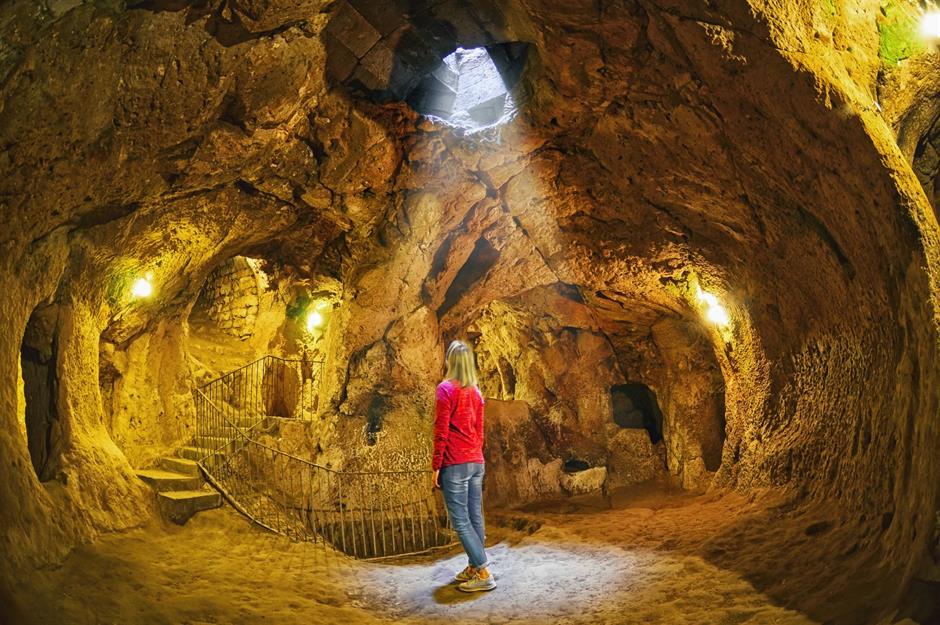
Archaeologists eventually uncovered 18 separate floors, each with chambers, corridors and sealable rolling-stone doors. Derinkuyu is thought to have been carved by the Phyrgians, Anatolia’s Iron Age inhabitants, but some speculate that the city was created by their predecessors, the Hittites.
The tunnels were used as storage and siege protection through the centuries, particularly during the Byzantine period, when up to 20,000 people sheltered there. Modern-day visitors can tour many of the chambers, and get a glimpse of what life was like beneath the surface.
Terracotta Army, Xi'an, China
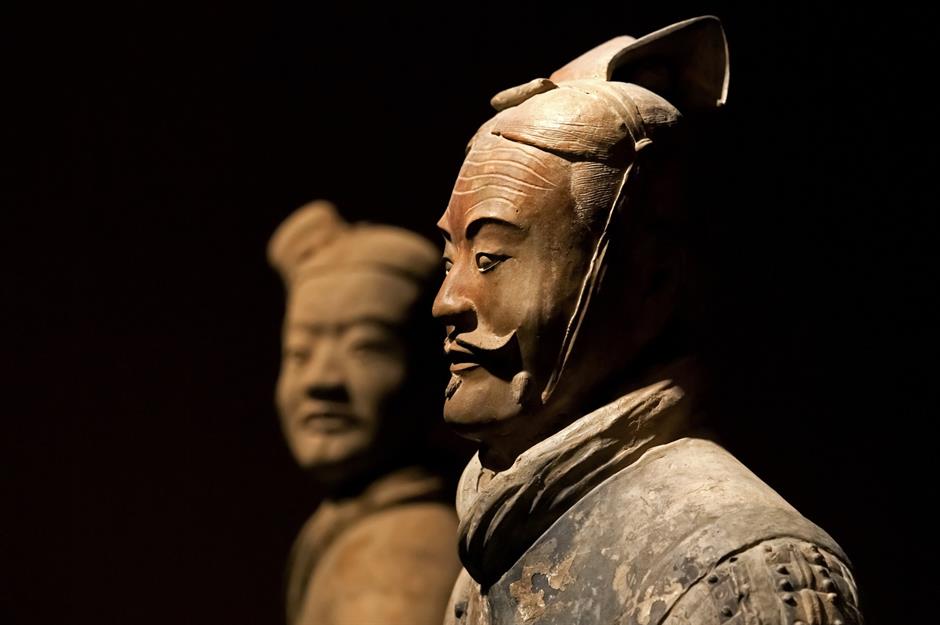
Chinese farmer Yang Zhifa and his brothers started digging a well to serve his village in 1974. Instead, he uncovered mysterious fragments of a clay soldier.
Chinese archaeologists swooped in and unearthed an entire terracotta army made up of more than 8,000 soldiers, 670 horses and 130 chariots. Yang was given a monetary reward, but he and the villagers he was hoping to dig a well for were relocated to a neighbouring village to allow the excavations to continue.
Terracotta Army, Xi'an, China
.jpg)
Archaeologists concluded that the Terracotta Army was buried near the tomb of Emperor Qin Shi Huang, who died in 210 BC, to protect him in the afterlife. The emperor's burial chamber remains undisturbed, but a large museum complex has been constructed nearby, enclosing the vast site's largest burial pit and the painstakingly reconstructed figures found within it.
The Terracotta Army Museum is now one of China’s most popular tourist attractions, drawing in millions of visitors a year.
Ötzi the Iceman, Ötztal Alps, Austria/Italy

German couple Erika and Helmut Simon were hiking in the Alps when they stumbled across a grisly find – a body in the ice. Both they and the mountain rescuers they called presumed it was that of a lost mountaineer. Only when it was hacked from the ice did they notice the body was clothed in fur and carried a bow and copper hand axe. Ötzi, as the body was soon nicknamed, actually died around 5,000 years ago.
Ötzi the Iceman, Ötztal Alps, Austria/Italy
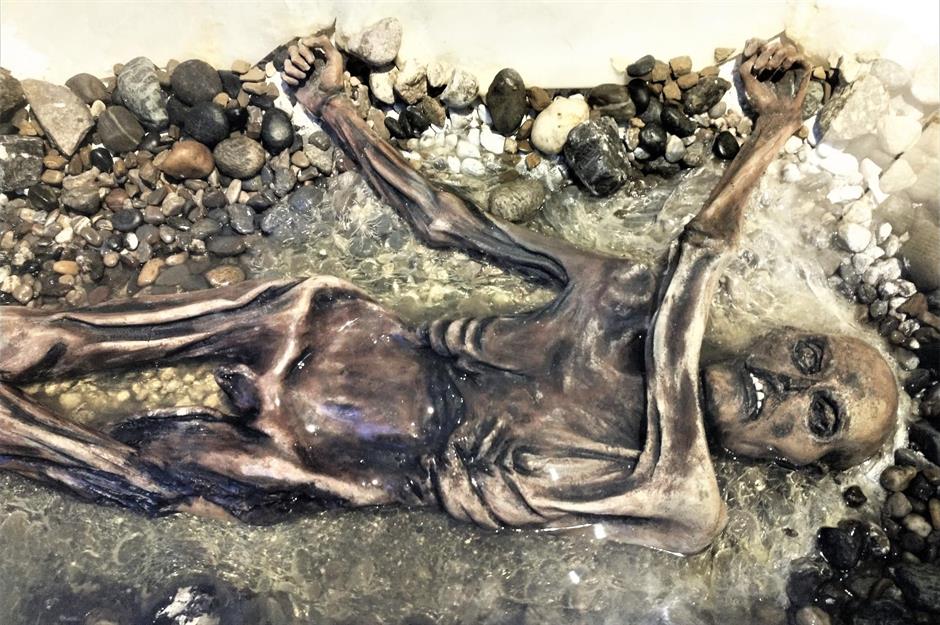
Closer examination revealed that Ötzi met a murderous end. He was killed by an arrow in his back which severed an artery, and we'll never know what motivated the backstabbing. Ötzi continued to cause trouble millennia after his death: his body's location on the Austrian and Italian border left archaeologists from both countries fighting over him.
Eventually, it was determined that he died less than 330 feet (100m) inside Italian territory, so Ötzi is now displayed in a climate-controlled chamber at the South Tyrol Museum of Archaeology in Bolzano, Italy.
Banwell Caves, Somerset, England, UK

In 1757, mining activity in the pretty village of Banwell, Somerset revealed an astonishing stalactite cave. Residents decided to open the cave to the public in 1824 to raise funds for a local school, and, when they began to dig a tunnel into the cave to improve access, they inadvertently happened upon another cavern.
This one was stuffed with ancient animal bones, which the local priest happily declared to be animals drowned at the time of Noah’s Ark.
Banwell Caves, Somerset, England, UK
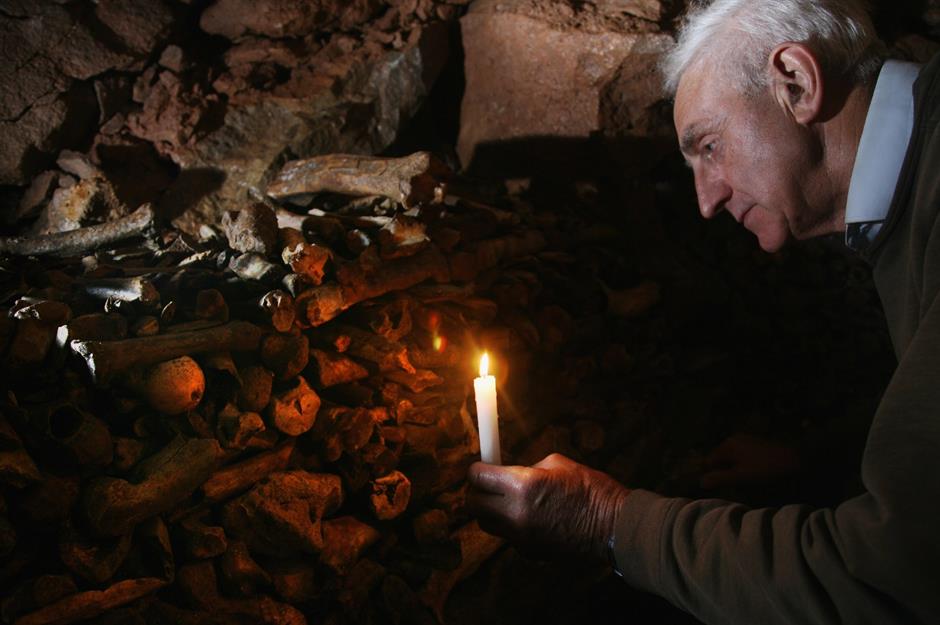
Careful analysis of the bones revealed that they dated to the Pleistocene era, around 80,000 years ago, when Britain shivered in an Ice Age. Archaeologists theorised that the Bone Cavern was used as a pitfall trap by Banwell’s prehistoric residents, as a large hole in the roof was found.
Pitfall traps were a convenient and safe method of catching and butchering the bison, reindeer and brown bears who roamed ancient Somerset. Modern visitors can drop into the caves too, but only on prearranged tours.
Rosetta Stone, Rosetta, Egypt

When French soldiers wanted to build new defences at Fort Julien in 1799 during their invasion of Egypt, they chose the easy option, retrieving stone from an ancient building a couple of miles away.
Luckily, Lieutenant Pierre-François Bouchard spotted one intriguing slab before it was carted away. The black hunk of rock had the same inscription written in three languages: hieroglyphics, demotic and ancient Greek. It proved to be the key to deciphering the as-yet untranslated hieroglyphics used by the ancient Egyptians.
Rosetta Stone, Rosetta, Egypt

The Rosetta Stone was initially stored in nearby Alexandria, and fell into British possession when the French surrendered. It was then put on display in the British Museum in 1802. In 1822, French linguist Jean-François Champollion finally cracked the hieroglyphic code when he realised the glyphs corresponded to sounds as well as meanings. The Rosetta Stone remains in London despite 21st-century campaigns for it to be repatriated.
Staffordshire Hoard, Staffordshire, England, UK
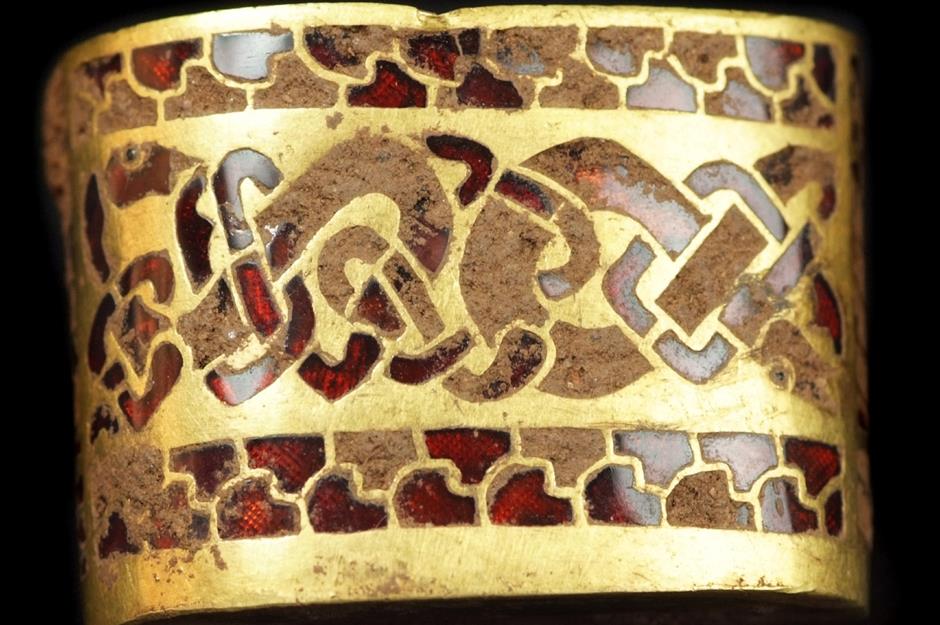
Metal detectorist Terry Herbert had no real inkling he would find anything when he asked farmer Fred Johnson if he could run his detecting gear over a recently ploughed field in 2009. But his machine just kept beeping, as the ploughing had brought priceless items from the Middle Ages close to the surface.
Over five days, Herbert pulled hundreds of golden Anglo-Saxon objects from the soil, from elaborate jewellery to war paraphernalia. Herbert believed there was more to come, and, worried that word might get out and the artefacts might be stolen, he called in the experts.
Staffordshire Hoard, Staffordshire, England, UK
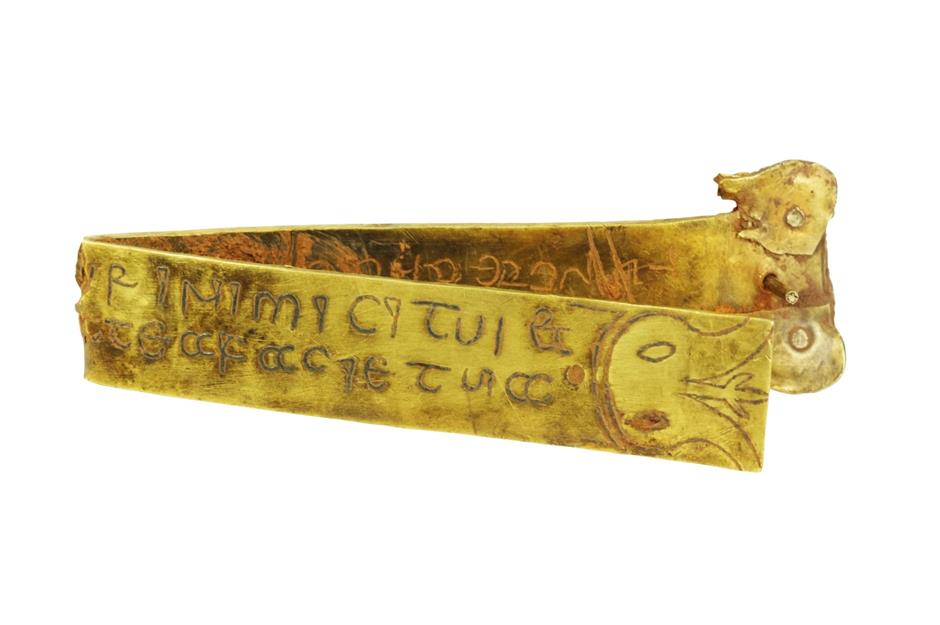
Careful excavation of Fred Johnson’s field eventually yielded almost 4,600 items. They were cleaned up to reveal an unrivalled collection of gold, silver and garnet objects and jewellery dating to the 7th and 8th centuries, all manufactured by highly-skilled Anglo-Saxon craftsmen.
Pictured is an inscribed gold strip, which may have formed part of a cross. The relics were possibly buried for safekeeping, only for their owner to never return. Now, selected items are on display at the Potteries Museum & Art Gallery in Stoke-on-Trent and at Tamworth Castle, both in Staffordshire.
Pompeii, Campania, Italy
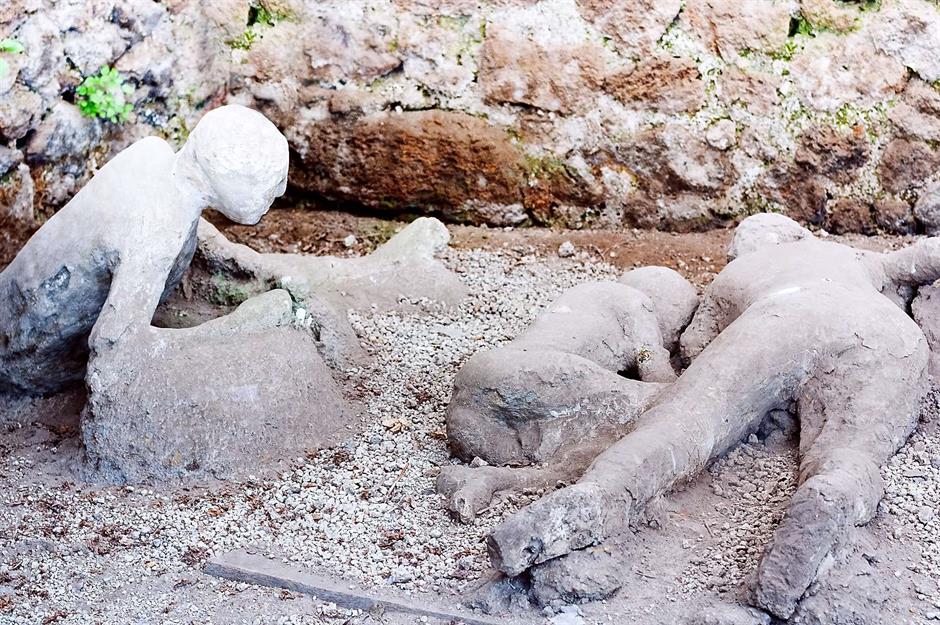
It’s hard to believe that the world’s most famous archaeological site was for so long unknown, but after Pompeii was buried by the eruption of Mount Vesuvius in AD 79 it was quickly forgotten.
It was only rediscovered in 1592, when architect Domenico Fontana built an underground aqueduct and kept pulling up ancient walls covered with paintings and inscriptions. However, Fontana couldn't rally support to excavate the ruins properly, so he reburied them to protect them from the elements.
Pompeii, Campania, Italy

Pompeii was rediscovered for the second time a century later in 1693, when antiquarians Francesco Picchetti and Giuseppe Macrini found the site and began the systematic excavations that continue to this day. Modern visitors can tour parts of the excavated town and experience a little of everyday life in the Roman Empire, from bathhouses and shops to amphitheatres and forums.
Henry VIII Pendant, Warwickshire, England, UK
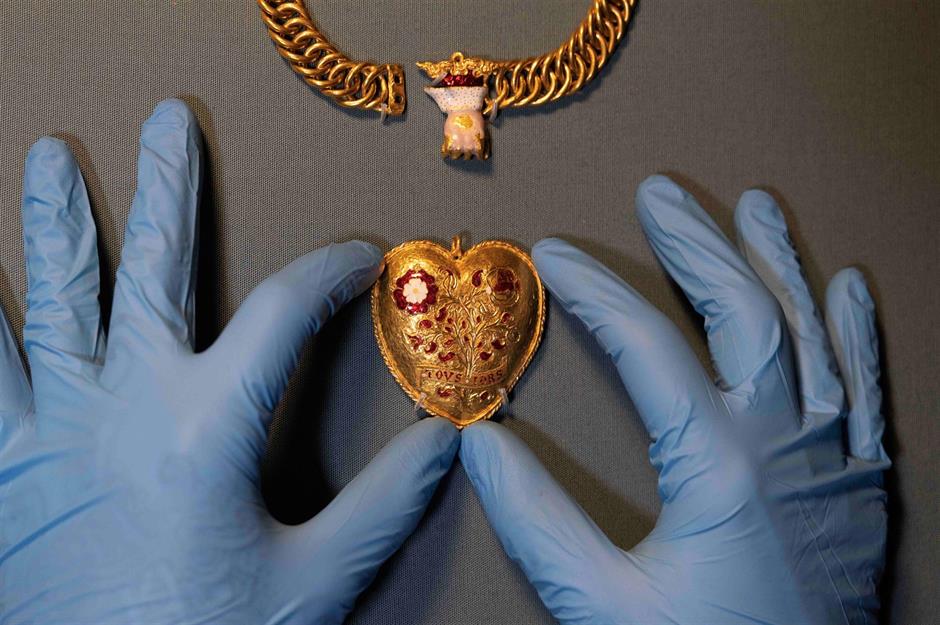
When detectorist Charlie Clarke stumbled upon a solid gold Tudor pendant celebrating the marriage of King Henry VIII and his first wife Katherine of Aragon, just six months after picking up the hobby, he assumed the find was too good to be true.
Experts at the British Museum initially agreed, but painstaking analysis eventually proved the pendant to be genuine and probably the finest find from Renaissance England of the last few decades. The 300-gram locket is decorated with still-sparkling enamel and there's nothing nearly so large or so valuable in the museum's entire collection of Tudor jewellery.
Henry VIII Pendant, Warwickshire, England, UK

The necklace has been dated to the early 16th century and the royal references are plain to see. The reverse face features the letters 'H' and 'K' – presumably for Henry and Katherine – united by a twirling strip of lace.
The front shows them similarly united, with a pomegranate tree (the badge of Katherine of Aragon) intertwined with a red-and-white Tudor rose. Both sides feature the caption TOVS and IORS, seemingly a French-English pun on the phrases 'toujours' and 'all yours', while an ornate gold chain made up of 75 links holds the locket in place.
Now uncover the most incredible archaeological discoveries made in recent years
Comments
Be the first to comment
Do you want to comment on this article? You need to be signed in for this feature